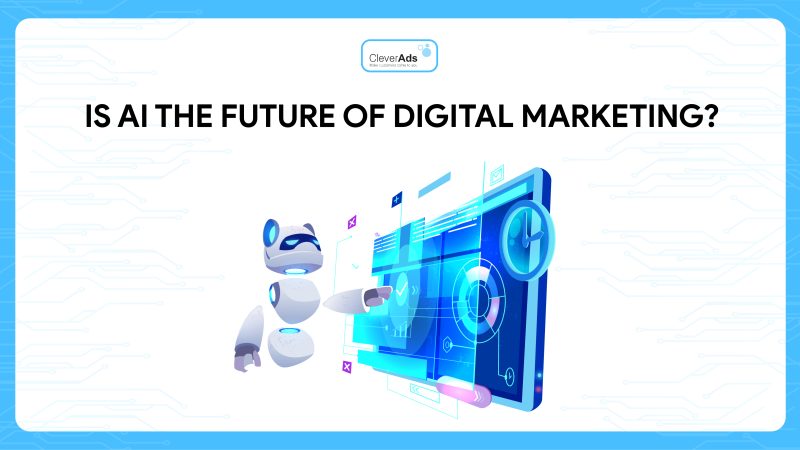Explain the Marketing concept for beginners

Today, to build an effective strategy, it is vital for managers to understand its basic concepts first. For example, if you want to develop a strong marketing strategy, understanding and having specific marketing concepts is more important than ever.
Then, by following five marketing directions, marketers can find the right plan. So, strategic direction is an essential step in marketing, but before that, marketers need to do much research before going to the strategy-building step. In today’s article, let’s learn what you need to know about the Marketing concept with CleverAds!
1. What is a marketing concept?
Marketing can be understood as satisfying customer needs and creating value for the business. The process begins with attracting customers, building relationships with them, and finally retaining them by meeting their needs.
Marketing concepts, also known as marketing management directions, mean ideas for activities that meet customer needs and surpass the company’s competitors by planning and executing to maximize profits by boosting sales.
The marketing concept aims to anticipate the customers’ needs and satisfy their wants, thereby gaining an edge over the competition. Marketing concepts first appeared in Adam Smith’s “Wealth of Nations” book. However, it is only in the 21st century that this concept is approached and known to more people.
To better understand the concept of marketing, let’s first learn about the concepts:
- Needs: You must understand the consumer’s lack of something and the many disadvantages that can happen without it. Requirements include many things, such as food, shelter, personal development, security, society, self-esteem, and respect.
- Wants: are consumers’ desires in life; Desires are formed from social issues and cultural factors.
- Demands: needs and wants to be backed by affordability
2. Purpose and role of Marketing concept
2.1. Purpose of Marketing Concept
Marketing concepts identify buyers’ needs and produce products and services that satisfy them. The ultimate aim of the marketing concept is to help customers (organizational customers or individual consumers) by providing them with excellent value. Specifically, that purpose includes:
Focusing on customers’ needs and wants so businesses can find a competitive advantage and differentiate their products from competitors. That product can be a good, a service, or an idea. Integrate all organizational activities to meet these wants and needs, including production and sales promotion activities.
We are achieving long-term goals for the organization by responsibly and sustainably meeting customers’ wants and needs.

2.2. The role of the marketing concept
Today, companies of all sizes are adopting marketing management orientations. Enterprise Rent-A-Car, for example, realized that its customers didn’t want to drive to the office to use the service, so Enterprise started delivering the car to the customer’s home or workplace.
Likewise, Disney found that some loyal customers didn’t like waiting in line. In response, Disney began offering FastPass at a premium price, allowing loyal customers to skip long queues at attractions.
From that, the marketing concept’s role is to determine customers’ needs and wants, making the products created after market research more suitable for their needs and desires.
The production department does not only create products, but even the marketing department helps determine ways to spread the product to customers based on practical research.
For example, a business, when applying marketing management orientations (marketing concepts), will use data about potential customers right from the time the product is in its infancy, thereby helping to create products, services, or ideas to are as accessible and relevant as possible, as well as supporting other marketing strategies to drive sales.
3. 5 basic types of marketing concepts
Many marketing concepts are being discussed today because each business has its own idea (management style). Some concept concepts are still commonly used today, but some have become obsolete and abandoned. However, today’s article will introduce five core marketing concepts and consider five marketing management philosophies.
3.1. Production concept
The idea of this concept is: “Consumers will favor more readily available and affordable products.” This is considered one of the oldest marketing management orientations. Unfortunately, companies that adopt this orientation often risk losing sight of their goals because they focus too little on the initial main activities.
Managers often focus too much on improving production and distribution efficiency, which leads to “marketing myopia.” However, a production-oriented management style is still a practical philosophy in some situations.
If a company decides to operate in this orientation, it will reduce production costs by making the production process more efficient. In addition, for its products to be popular with consumers, the company will try to expand its distribution network as widely as possible.
When applying production orientation, there will be two cases.
1. The demand for a product exceeds the supply of the business. This often happens in very price-sensitive markets. In such situations, consumers will be interested in owning the products rather than their quality or use. Therefore, manufacturers will pay more attention and promote the issue of increasing output.
2. High production cost. This will cause consumers to hesitate to buy your products. The company focused on increasing production volume and improving technology to reduce costs.
Reducing production costs will likely increase the size of the market. From there, a company can create a specific position in the business market.
This orientation is also seen in service-providing businesses such as hospitals. However, this is also criticized a lot because it can cause the health care service of that business to be reduced.
Example of production orientation:
On Amazon’s e-commerce site or retail stores, the market is flooded with cheap products from China. Everything from affordable plastic products from China is on every consumer’s shopping cart.
You can also mention Vivo, a smartphone brand from China. Their phones are available almost everywhere in the Asian market. Customers can enter any phone store in Asia with the latest and greatest Vivo smartphone.
3.2. Product concept
Product orientation assumes consumers will favor products with the highest quality, performance, and innovative features. With this orientation, marketing strategies focus on continuous product improvement.
Product quality and innovation are essential elements of a marketing strategy, sometimes the only factor. However, targeting only products can expose a company to “marketing myopia”.
During the first three decades of the twentieth century, more and more industries adopted mass production techniques, and by the early 1930s, the supply of manufactured goods exceeded demand. As a result, manufacturing enterprises need more production capacity and fierce competition to attract customers’ attention.
Once there, they realize buyers will favor well-made products and are willing to pay more for additional product features. From there, product orientation began to appear more and more in the minds of many businesses.
This marketing management orientation is relatively simple because the business that offers the standard product at the lowest price will win. In addition, a company pursuing this orientation will strive to improve its products in quality, performance, and other recognizable features.
Some examples of product orientation:
When thinking of high-quality products, Apple is one of the top brands. Their products are of such good quality that they set trends and standards for their industry.
Logitech makes high-quality computer products such as keyboards, mice, and webcams. These high-quality products cost more, but customers still buy and receive near-free advertising from the personal reviews of customers who have purchased the product.
3.3. Selling concept
Sales orientation suggests that “consumers will not buy your products unless you make a large-scale sales and advertising effort.
Here, the manager focuses on how to sell the product rather than building long-term and profitable customer relationships. In other words, this orientation aims to sell what the company makes rather than deliver what the market wants. Typically, a sales program of such a large scale would carry a very high risk.
The Great Recession in America proved that even the quantity or quality of goods no longer matters. Instead, the problem is how to sell those products.
According to Philip Kotler, consumers will usually not buy the company’s products without specific effects. Since then, sales promotion activities have been born and ensured business sales. According to him, consumers are often influenced by many factors before purchasing. The business’s mission is to control consumers by using all possible sales techniques to encourage them to buy more.
For effectiveness, sales must precede several marketing activities, such as needs assessment, marketing research, product development, pricing, and distribution. If marketers do an excellent job of identifying consumer needs, developing suitable products, pricing, distributing, and promoting them effectively, these products will be sold quickly.
Marketing based on sales orientation will bring high risks to businesses because a consumer who is not satisfied with a product will complain about that product to 11 acquaintances, this rate is gradually multiplied, and the speed of spread is increased. Therefore, this lousy information transmission will be increased rapidly.
Sales orientation example:
To boost their sales activities, soft drink businesses have increased running ads 24/7 and spent millions of dollars on this activity because they know that their products do not seem to have any health benefits. Customers can easily replace them with filtered water (things available on earth). Since then, advertisements on television and online platforms from carbonated beverage companies have been promoted more.
3.4. Marketing concept
Marketing orientation holds that – “to achieve goals, businesses need to accurately identify the needs and wants of the target market, thereby satisfying their wants better than competitors.
Here, the motto set out is “customer-centered”. With this management orientation, businesses believe that focusing on customers and giving them the value they desire is the only way to achieve sales and profits. Therefore, the task of marketers is to find the right customers for the product rather than seeing the right product that customers are looking for.
As businesses begin to achieve production capacity that exceeds market demand, executives will need to re-evaluate and reorganize marketing within the company as the market needs have changed. Significantly. These changes have led to the development of marketing orientation.
In the above orientations, goods will be brought to the market, hoping to find customers. In contrast, marketing orientation assumes that marketing begins with the customer and goes back to providing information to produce products that satisfy customer needs in the right quantities and specifications.
In this direction, the company’s operations aim to satisfy its customers’ needs and wants.
3.5. Social Marketing Concept
Social marketing orientation questions whether pure marketing orientation ignores possible conflicts between consumers’ short-term wants and long-term consumer welfare.
The social marketing orientation holds that “marketing strategy must deliver value to customers in a way that maintains or improves both consumer and societal well-being. This orientation calls for sustainable and socially responsible marketing activities. This means that businesses need to strike a balance between delivering sustainable value to the community and the environment while meeting the current needs of consumers and businesses.
Social marketing orientation puts people’s welfare before satisfying customers’ wishes and the business’s profit factor. The earth is getting warmer, which requires businesses to take specific actions. So companies are slowly, in whole or in part, trying to implement a social marketing orientation.
This management orientation states that the critical task of the company is to determine the needs and wants of the target markets and then adjust the organization’s activities to satisfy customers’ needs. Products more effectively than competitors in a way that maintains and enhances the well-being of consumers and society in general.
This orientation requires managers to balance three factors in marketing policy: company profits, consumer satisfaction, and public interest.
Examples of social marketing orientations:
Tesla promises to vigorously promote green energy with electric cars and solar panels/tiles.

4. CONCLUSION
Businesses often need to apply a single management orientation more rigidly. They often combine or modify marketing concepts to suit the market situation, competition, and sales.


